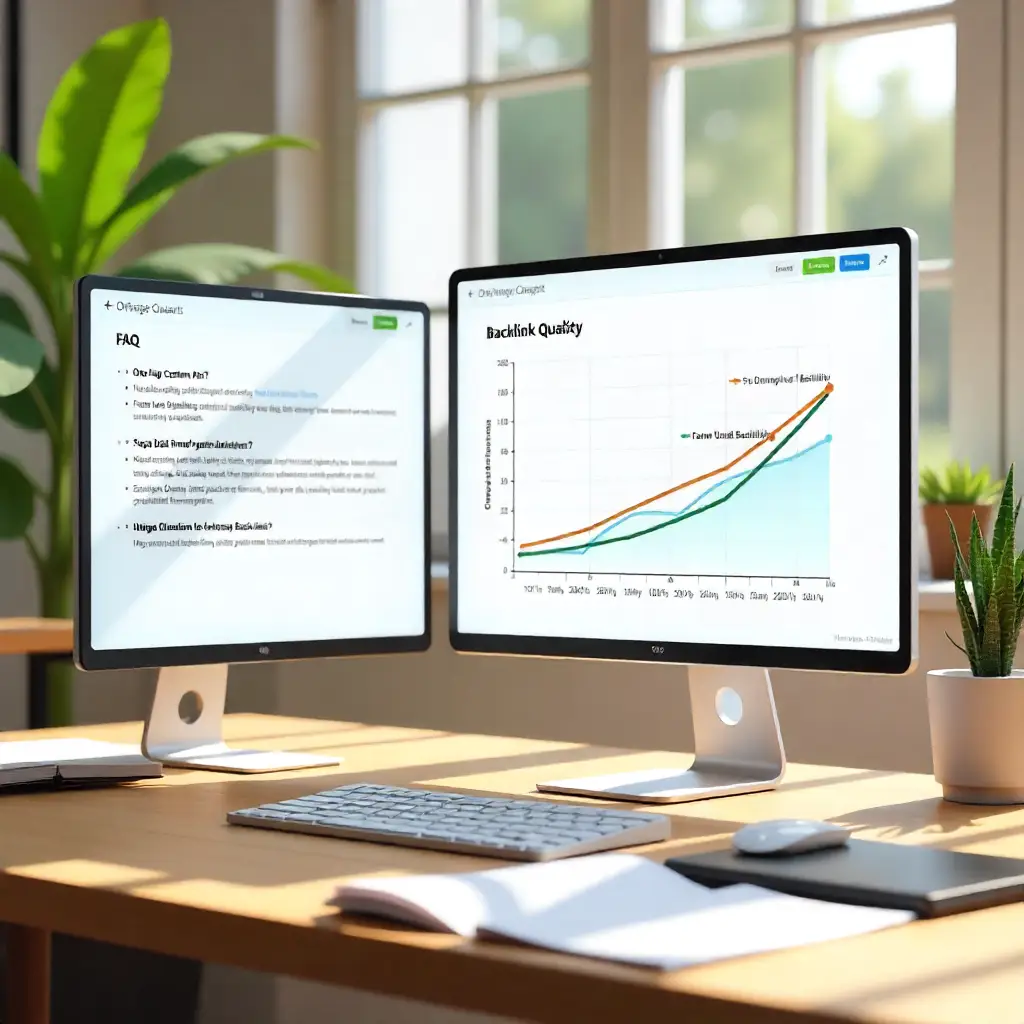Algorithms evolve, sites ship changes, and data breaks silently. A comprehensive SEO audit (including technical SEO audit, diagnostic SEO audit, and content/backlink audit) shows exactly what to fix—and in what order—to unlock organic growth. We focus on time-to-first-value: quick, high-impact fixes first; deeper refactors second. For complex stacks, pair this with our Technical SEO; for content velocity, see Content Marketing; for broader strategy, start at SEO Services.

Shipping culture: small, safe batches that move metrics quickly
Clear diagnostics → actions: each finding links to a fix, owner, and expected outcome
Dashboards & annotations: know what shipped, when, and why
Scale-ready: works for SMB, ecommerce, and enterprise architecture
1) Technical SEO Audit (core)
Crawlability & discovery (robots/meta robots, XML sitemaps by type)
Indexing & duplication (canonicals, parameters, pagination, soft-404s)
Core Web Vitals (LCP/INP/CLS) using field data; media & JS priorities
Rendering/JS SEO (SSR/ISR, hydration, blocked resources, rendered HTML parity)
Template hygiene (titles/H1/H2, breadcrumbs, schema blocks)
→ Deep fixes often ship via Technical SEO.
2) Content SEO Audit
Query/intent mapping for categories, services, and key landing pages
Thin/duplicate content and cannibalization triage
On-page upgrades (headers, FAQs, internal anchors, EEAT proof)
Programmatic content opportunities (hubs, comparisons, how-to, glossary)
→ Execution supported by Content Marketing.
3) Information Architecture & Internal Linking
Silo alignment across /services/, /locations/, /industries/
Orphan/near-orphan recovery; pagination & breadcrumb patterns
Faceted navigation strategy to avoid index bloat
4) Backlink Audit & Digital PR Map
Toxic/risky links flagged; disavow recommendation if warranted
Authority gaps vs. competitors’ topics (not agencies) and PR angles for safe link earning
5) Local & Entity Signals (if applicable)
Google Business Profile (aka Google Maps Business Profile; formerly Google My Business) completeness, categories, attributes, media
Location pages with LocalBusiness/Service schema, reviews & NAP integrity
6) International & Hreflang (if applicable)
Canonical + hreflang coherence (language-region), regional sitemaps, language switch discoverability
7) Analytics, Tracking & Consent
GA4 events, conversion definitions (primary/micro), cross-domain, referral exclusions
GSC property coverage, page grouping, and annotation cadence
Consent Mode alignment and (where relevant) server-side tagging readiness
8) Prioritized Roadmap & Working Session
Impact/Effort scoring, owners, ETAs, and test notes
Live read-out and “first 30-days” ship plan
Optional implementation support (dev/CMS/Elementor/Webflow), with QA
Throughout the report, you’ll see the terms SEO audit, technical SEO audit, and diagnostic SEO audit used precisely to distinguish foundational tech issues from content and link opportunities.

Without SEO Audit you are like moving in a dark street, Maybe you are on the right path or you are losing time and business.
Haytham Abdelmaguid Tweet
Faster crawl & stable indexing (robots, sitemaps, canonicals)
Core Web Vitals pass rates (LCP/INP/CLS) that lift UX & rankings
Intent-matched content that improves CTR & conversions
Clean internal linking & IA for coverage without index bloat
Safer link profile with toxic-risks flagged & PR opportunities mapped
Trusted measurement (GA4, GSC, consent-aware tracking)
Prioritized roadmap with owners, ETAs, and expected impact
+33% indexed pages and +27% organic sessions in 90 days
CWV pass rate 45% → 82% after media/JS fixes; CTR up +14% via title/meta tests
Clear PR map generated 21 safe, local links in 8 weeks

A complete audit covers technical SEO (crawl, indexing, CWV, rendering), content/intent, information architecture, backlinks/PR risks, local/entity, international/hreflang (if relevant), and analytics/tracking—ending with a prioritized roadmap and owners.
Typical timelines: 2–4 weeks depending on site size, access, and modules (e.g., international). We front-load quick wins so you see movement early.
A technical SEO audit focuses on infrastructure, crawl/index, CWV, rendering, architecture, schema. A broader SEO audit also includes content and backlinks plus local/international and analytics.
Both. We can guide your team or implement directly with clear QA. Technical changes often happen via Technical SEO; content via Content Marketing.
Read access to GSC, GA4, and CMS; optional server logs accelerate diagnostics. Temporary access is fine and can be revoked post-audit.
Get a comprehensive SEO audit and a 30-day plan to fix crawl, speed, relevance, and measurement—so every page works harder.